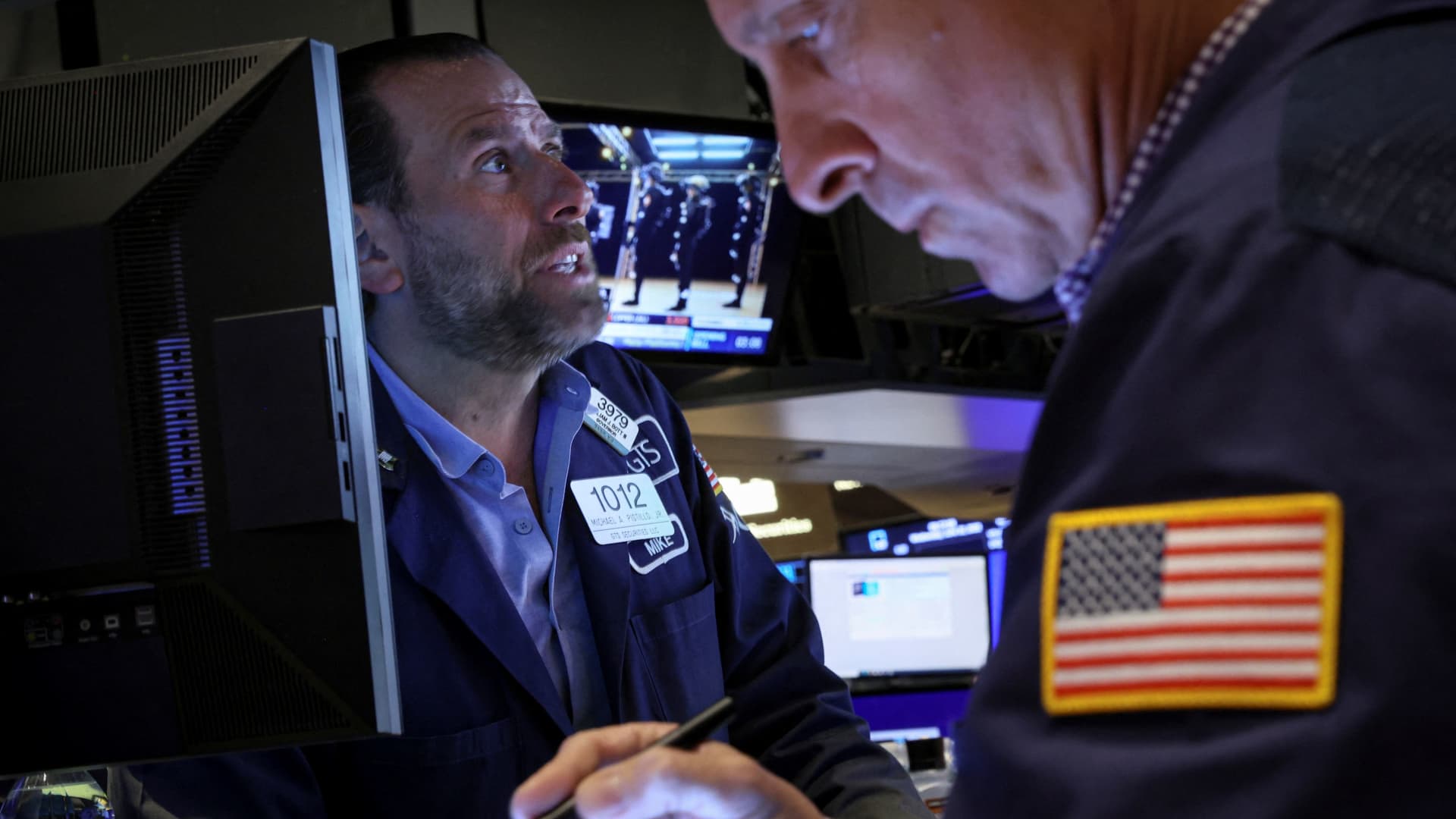
The stock market bounce in recent days is just a relief rally and investors should avoid getting sucked back in, according to Trevor Greetham, head of multi-asset at Royal London Asset Management.
The positive momentum for global stocks looked set to continue on Monday, after the Dow Jones Industrial Average climbed 2.7% on Friday, and both the S&P 500 and Nasdaq Composite added more than 3%. The pan-European Stoxx 600 index, meanwhile, jumped by 2.6% on Friday, its best day for more than three months, and continued its rise on Monday.
However Greetham from Royal London, which had over $200 billion in assets under management at the end of 2021, is far from convinced that a downward trend is over.
“We still think we’re in a bear market and we think that this is as you describe it, a relief rally, and what we’ve seen so far is just the interest rate-driven part of that bear market,” Greetham told CNBC’s “Squawk Box Europe” on Monday, highlighting that a fall in commodity prices had likely eased expectations for central bank interest rate hike requirements.
The S&P 500 is still down almost 18% year-to-date, while the Stoxx 600 had shed around 15% by mid-afternoon in Europe on Monday.
In terms of the duration of the bear market, Greetham suggested investors look to other “central bank-inspired bear markets” such as the 2007-09 financial crisis, the early 2000s after the dotcom bubble burst, and the early 90s.
“You had two- or three-year bear markets in stocks and we’ve had six months so far, so earnings are the next problem. Central banks do need to squeeze inflation down and that means creating spare capacity, and this could be quite a long, grinding period,” he said.
“All the biggest up days are in bear markets, so don’t get too sucked back into markets, I would say. This rally could persist a bit longer, but don’t think this is the end of the bear market – I think there’s quite a bit more time to run through, and you’ve got to be tactical and you’ve got to be diversified.”
Another possible source of market relief last week came from the University of Michigan’s Surveys of Consumers, which showed that consumers expect inflation to rise at a 5.3% annualized rate as of the end of June — down from a preliminary reading released earlier this month.
Central banks across major economies have begun sharp rate hiking cycles in a bid to rein in inflation running at multi-decade highs, prompting speculation that aggressive monetary policy tightening could tip an already slowing economy into recession.
Greetham agreed that inflation in the U.S. will begin to come down soon as a result of the Federal Reserve’s policy tightening and longer-term commitment to temper consumer price increases. However, he reiterated that the second phase of the bear market is yet to come.
“We’ve been in stagflation with a slowdown and rising inflation, but we think we’re going to continue to be in slowdown as inflation comes down, because central banks are going to need it to come down a long way,” he said.
“So policy will be held quite tight, rates will go quite a lot higher even if inflation is coming down, and that’s a problem for stocks, because when you look at prior recessions, stock markets haven’t usually properly troughed out until the unemployment rate has peaked.”
Greetham pointed out that the U.S. jobs markets remains relatively strong, suggesting that it could be another year or possibly two before a sustained recovery begins to form.
However, he said it was “understandable” that the market had seized on the better inflation figures during the transition period between the “phase one interest rate bear market” and “phase two earnings bear market.”




